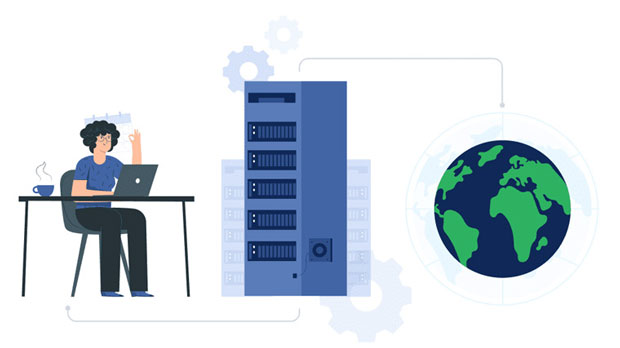When configuring a socks5 proxy on Windows 10, users may sometimes encounter connection issues that hinder access to websites or online services. socks5 proxies are commonly used to route internet traffic through a third-party server to mask the user's original IP address, enhance security, or bypass regional restrictions. However, there are several reasons why a SOCKS5 proxy may fail to connect on Windows 10. These issues can range from incorrect settings, network conflicts, or software limitations, to more complex problems like firewall restrictions or incorrect authentication details. Understanding the potential causes of these failures is crucial for troubleshooting and ensuring a smooth user experience when using SOCKS5 proxies. Understanding SOCKS5 Proxy and Its RoleSOCKS5 is an internet protocol that allows clients to route their traffic through a proxy server. Unlike HTTP or HTTPS proxies, which are typically designed for specific types of traffic, SOCKS5 operates at a lower level, handling all traffic types, including HTTP, FTP, and even peer-to-peer data. This makes SOCKS5 a versatile and secure choice for users who need a proxy solution that can handle different kinds of online activities.The primary function of a SOCKS5 proxy is to act as an intermediary between the client and the internet, providing anonymity and bypassing network restrictions. SOCKS5 also supports enhanced security features, such as the ability to authenticate users, ensuring that only authorized individuals can access the proxy. However, despite its flexibility and security advantages, the SOCKS5 protocol can encounter problems, especially during setup or network configuration, leading to connection failures.Common Causes of SOCKS5 Proxy Connection Failures on Windows 10There are various reasons why a SOCKS5 proxy may not work correctly on Windows 10. Understanding these causes can help users quickly identify and resolve connection issues.1. Incorrect Proxy SettingsOne of the most common causes of connection issues is incorrect proxy settings. SOCKS5 proxies require specific configuration details such as the server IP address, port number, and authentication credentials (if applicable). If any of these settings are incorrect, the proxy server will fail to establish a connection. It's important to double-check the provided information to ensure it matches the server details exactly.In addition, many applications and system settings may have their own proxy configuration options. Users may need to configure the proxy settings individually for each application, such as web browsers, torrent clients, or other software that uses the proxy connection.2. Network Configuration ConflictsAnother common issue that can cause SOCKS5 proxies to fail is network configuration conflicts. If the computer is connected to a local network or VPN, these network settings may interfere with the proxy connection. VPNs and other types of network proxies may block or override SOCKS5 settings, causing routing issues that prevent the proxy from functioning correctly.Users should ensure that there are no conflicting network configurations in their system, such as multiple proxies, VPN services, or DNS settings, which could prevent the SOCKS5 proxy from connecting. Disabling unnecessary VPN or proxy settings temporarily may help isolate the cause of the problem.3. Firewall and Security Software RestrictionsWindows 10’s built-in firewall or third-party security software can block certain network traffic, including connections to SOCKS5 proxies. Firewalls may treat proxy traffic as suspicious or unauthorized, leading to connection failures. This is especially common when using non-standard ports or when security software is overly restrictive.To troubleshoot this, users can check the firewall settings and ensure that the required ports for the SOCKS5 proxy (usually port 1080) are not blocked. Disabling the firewall temporarily or adding an exception for the SOCKS5 proxy software can help verify whether the firewall is causing the connection issue.4. Proxy Server IssuesIn some cases, the problem may not be with the client’s computer, but with the proxy server itself. The server may be down, overloaded, or misconfigured, causing it to reject connection requests. Users should ensure that the socks5 proxy server they are attempting to connect to is functioning correctly.If the proxy provider offers support, users can reach out for assistance to confirm that the server is operational. Additionally, checking for server-side updates or maintenance alerts may provide insight into potential issues affecting the proxy connection.5. Authentication and Credentials ProblemsIf the SOCKS5 proxy requires authentication, incorrect login credentials may prevent a successful connection. It's important to verify that the username and password (or other authentication methods) provided are correct. Additionally, some proxy services may use different methods of authentication, such as SOCKS5 with username/password authentication or with a token.Users should confirm that they are using the correct authentication method required by their proxy provider. Sometimes, authentication errors may not be immediately obvious, and troubleshooting these settings can resolve the issue.6. Windows 10-Specific IssuesWindows 10 itself may introduce some unique challenges when configuring and using SOCKS5 proxies. One common problem is the fact that certain versions of Windows 10 may have limitations on network configuration or may require administrative privileges to change certain proxy settings. This can prevent the proxy from functioning correctly, especially if there are restrictions on the user account.In addition, Windows updates or changes to the system may inadvertently reset or modify network configurations, including proxy settings. Users should ensure that their system is up to date and that they have the necessary permissions to modify network settings. It's also worth checking for any issues related to the Windows 10 networking stack, which could impact the proxy connection.7. Software Compatibility and UpdatesFinally, issues with software compatibility or outdated programs can contribute to SOCKS5 proxy connection problems. If the software being used to access the proxy (such as a browser, torrent client, or other application) is outdated or incompatible with SOCKS5, it may fail to connect properly. It’s important to ensure that the software is updated to the latest version and that it fully supports SOCKS5 proxies.Additionally, users should ensure that the SOCKS5 proxy client software, if used separately, is up to date and properly configured. Sometimes, outdated proxy software can also be the cause of connectivity issues.Troubleshooting Steps to Resolve SOCKS5 Proxy Connection IssuesTo resolve SOCKS5 connection issues on Windows 10, users should follow these troubleshooting steps:1. Double-check Proxy Settings: Verify the IP address, port, and authentication details to ensure they are accurate.2. Review Network Configuration: Ensure there are no conflicting proxies, VPNs, or DNS settings that may interfere with the connection.3. Check Firewall and Security Software: Disable any firewalls or security software temporarily to check if they are blocking the proxy connection.4. Test the Proxy Server: Confirm that the proxy server is working by testing it on a different device or with a different network.5. Verify Authentication Details: Ensure that the correct username, password, or authentication token is used.6. Check Windows Settings: Ensure the system has the necessary permissions to modify network settings and that no system updates have altered network configurations.7. Update Software: Make sure both the proxy client and any applications using the proxy are updated to the latest versions.By following these steps, users can troubleshoot and resolve SOCKS5 proxy connection issues on Windows 10, ensuring a more secure and seamless internet experience.ConclusionIn conclusion, while SOCKS5 proxies offer many benefits, such as enhanced privacy and the ability to bypass geographical restrictions, users may encounter connection issues due to incorrect settings, network conflicts, security software, or proxy server problems. By understanding the common causes of these failures and following a systematic troubleshooting approach, users can resolve the issues and restore their connection to the SOCKS5 proxy. Proper configuration and regular maintenance of the system and software are key to avoiding these issues and ensuring the reliable performance of the SOCKS5 proxy on Windows 10.
Jan 16, 2025





























































